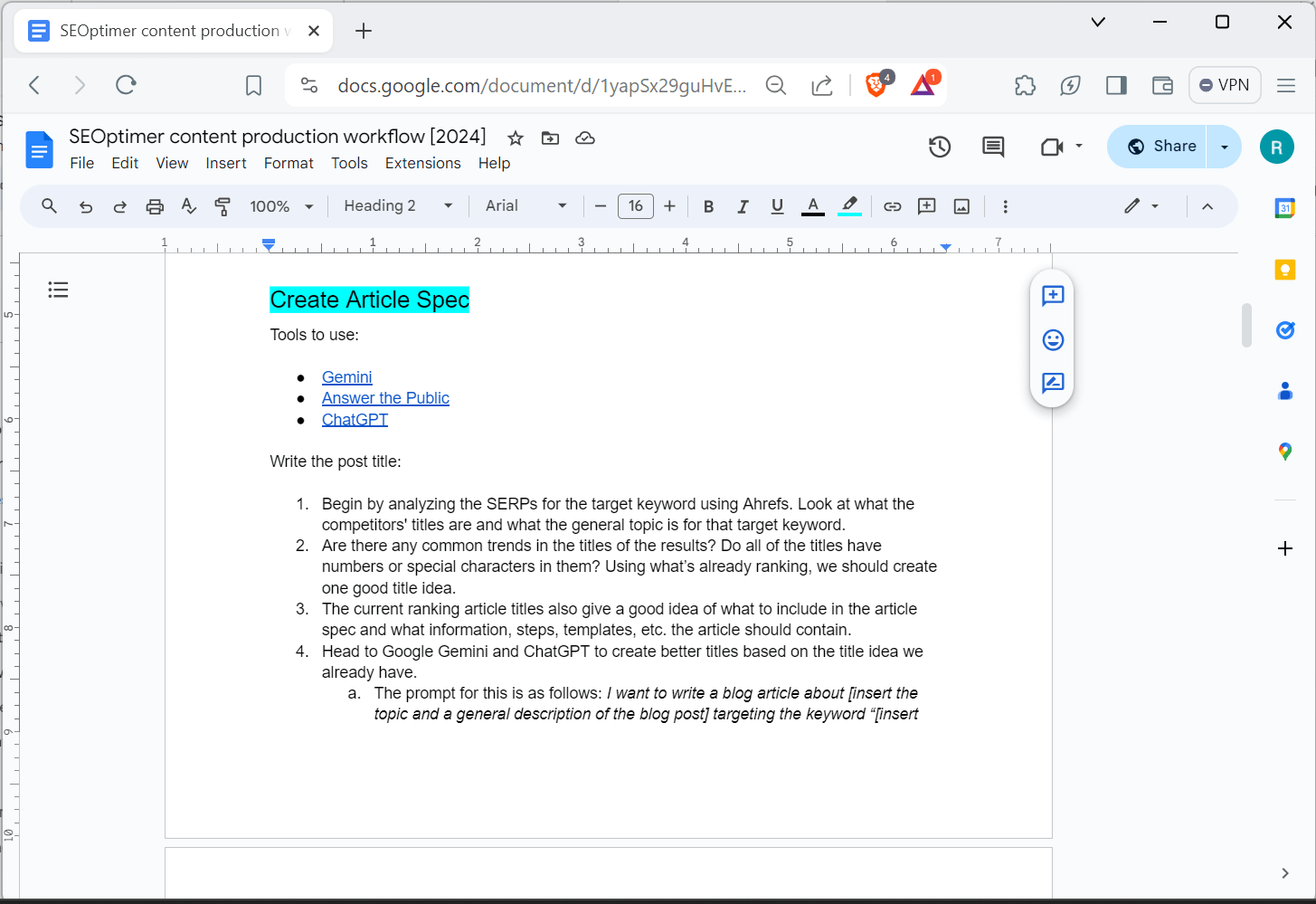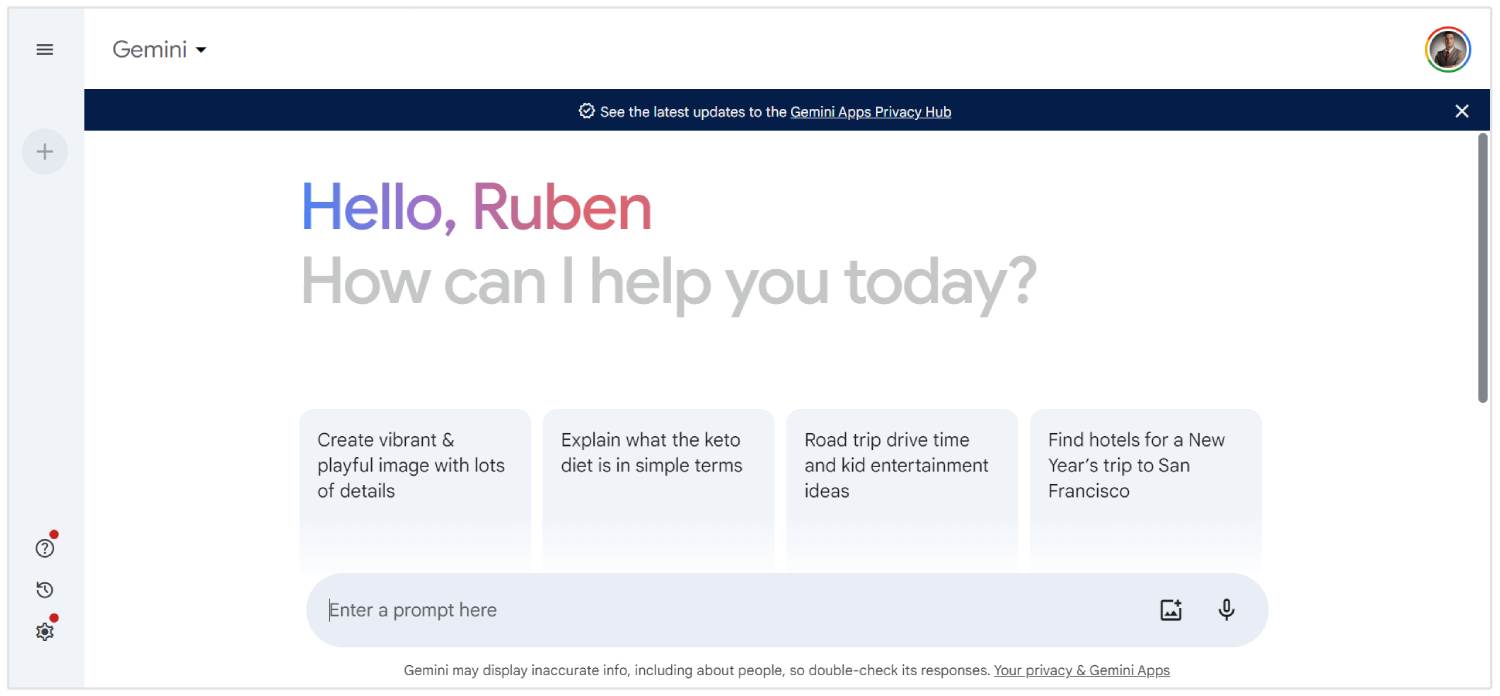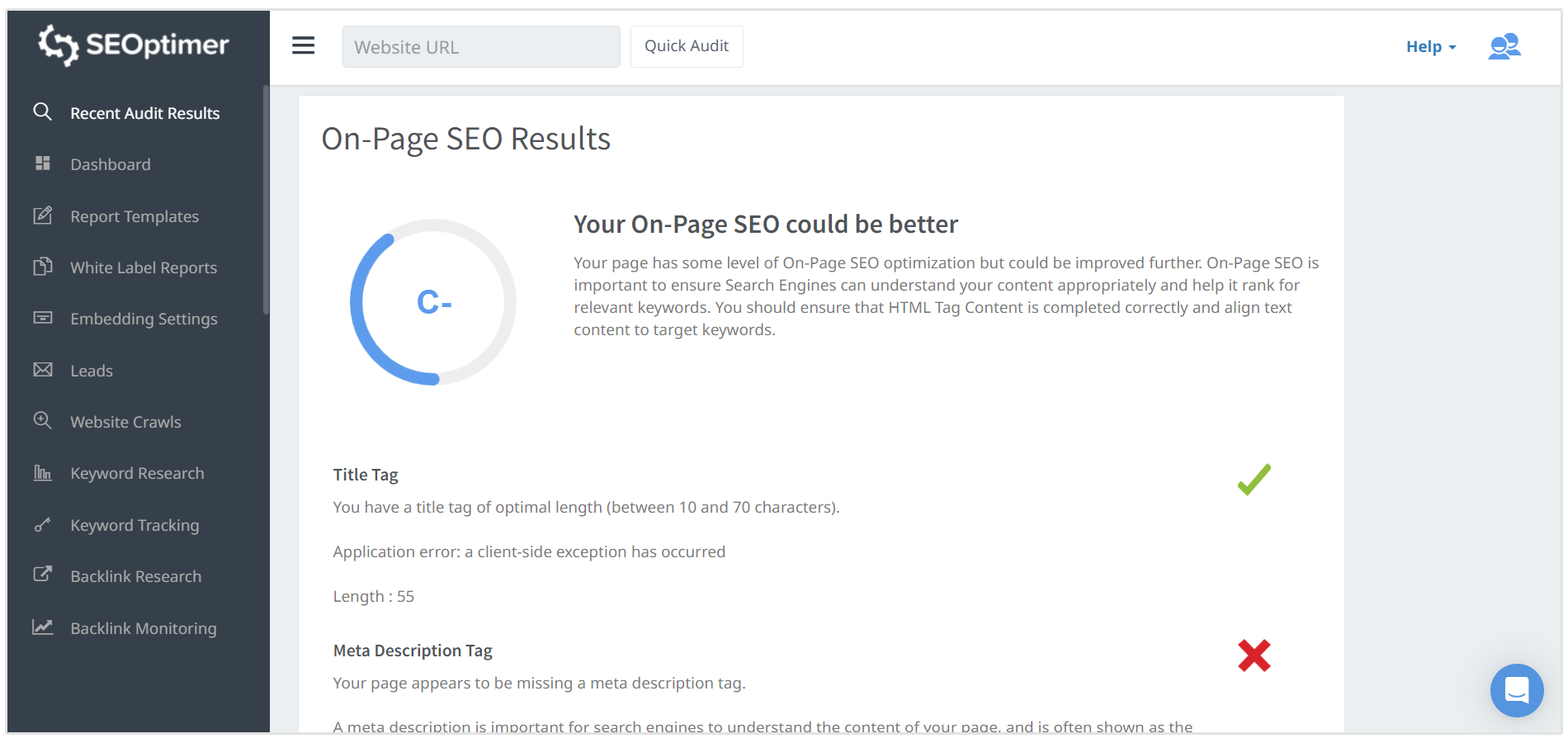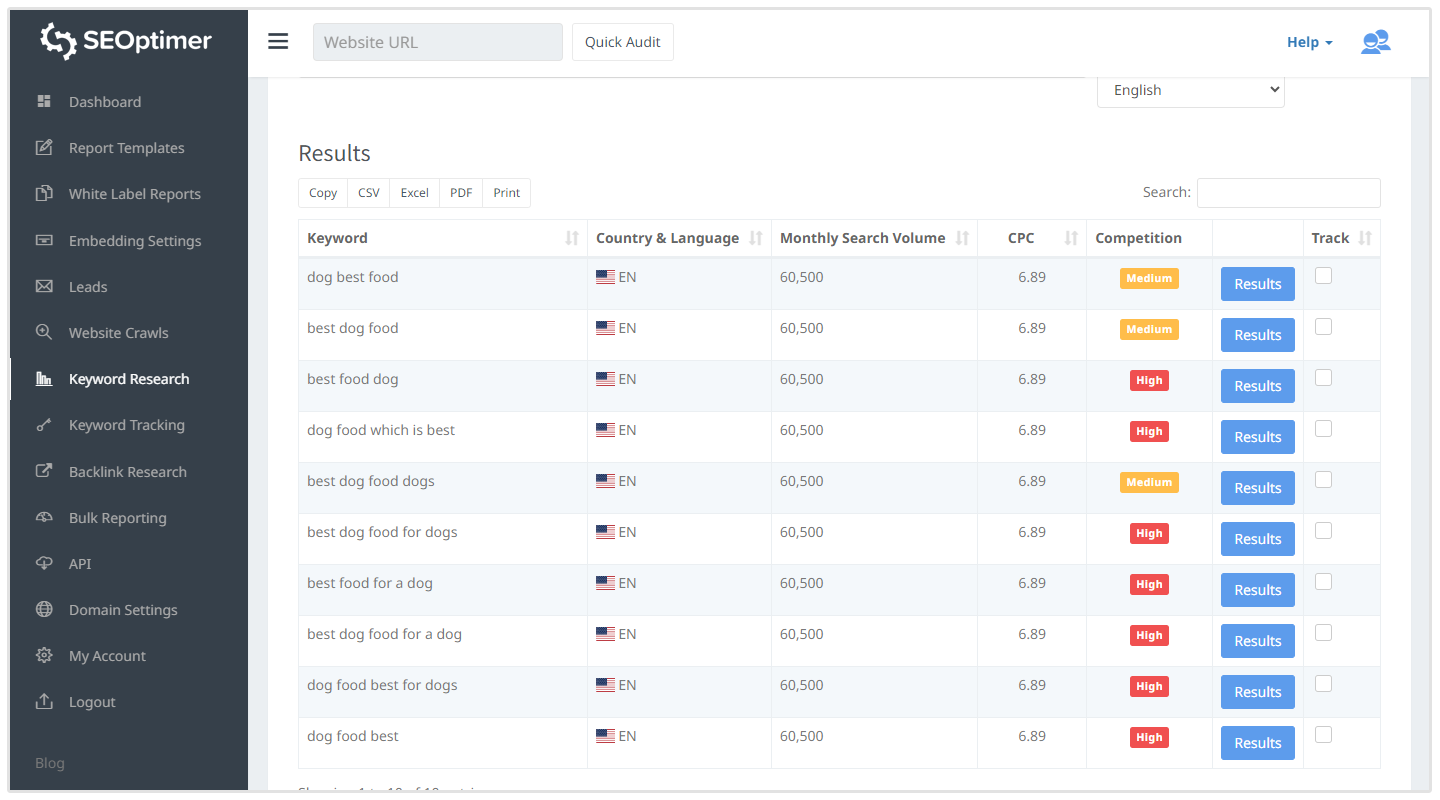
An effective SEO workflow empowers marketers and business owners to streamline their processes, making their strategies both efficient and enabling easier scaling opportunities.
In this article, we delve into what an SEO workflow is, explore the benefits it offers, and unveil four useful SEO workflows every marketer must have in their toolbox.
What is an SEO Workflow?
An SEO workflow is a step-by-step process that breaks down SEO tasks into manageable actions, ensuring efficient and successful website optimization.
SEO workflows are similar to SEO roadmaps in that they show the way forward.

The key differentiator is that an SEO roadmap focuses on the big picture.
This includes things such as due dates, goals and objectives, a project timeline, and the people responsible for various elements of an SEO campaign.
In comparison, an SEO workflow goes into detail on the steps marketers need to follow to complete specific tasks in the SEO roadmap.
For instance, an SEO roadmap may say that for this quarter your business should publish 10 new SEO-optimized blog posts. In order to achieve this target, you can use an SEO workflow for both the content production and keyword research to help you produce the content at scale.
Why Follow an SEO Workflow?
Here are some compelling reasons why you should follow an SEO workflow:
Streamlined Processes
An SEO workflow organizes your efforts, making the path from planning to execution smoother and more efficient.
No more guesswork or ad-hoc tasks; everything is methodically laid out for maximum efficiency.
For instance, at SEOptimer, we use a “Content Production Workflow” which includes detailed steps on how to produce new blog posts. This includes everything from writing up the article brief to the last step of publishing the post.

Because all the steps in the content production process have been clearly outlined and documented, our in-house and outsourced writers can easily produce content matching our desired quality.
Consistent Quality
By following a structured and standardized approach, you can ensure that every piece of content meets high SEO best practices, which can improve your site's visibility and appeal to both search engines and readers.
Let’s take the example of our “Content Production Workflow”, one of the steps is to use generative AI tools like ChatGPT and Google Gemini to help optimize a section of the article to rank in the Featured Snippets section.

Because we’ve spent time perfecting the prompt for this, we can be assured that the generated output is sufficient in quality for every blog post we produce.
Stay Ahead of the Curve
Google regularly updates its search engine algorithm, so your content production processes may change from time to time.
A well-thought out SEO workflow keeps you agile, enabling quick adaptation to algorithm updates and market trends, ensuring your content remains relevant and competitive.
Next, we're going to be sharing 4 essential SEO workflows for marketers and business owners.
These workflows aren't fixed, meaning you can change them or add additional steps if needed, but feel free to use them in your business.
SEO Workflow for Auditing Websites
Regular website audits are essential for identifying SEO roadblocks and keeping your website on top.
This is where an efficient SEO workflow for auditing websites becomes important.
Here are the steps in this SEO workflow:
- Choose specific pages or your entire website for an analysis.
- Use a website audit tool to perform the analysis.

- Review the results and identify the main problems on your website.
- Follow the recommendations that the tool suggests to fix the main issues.
You can also check out our in-depth 15 step website audit checklist if you'd like to perform a manual analysis of your site instead.
SEO Workflow for Keyword Research
Keyword research is the cornerstone of any successful SEO strategy. It involves identifying the terms and phrases your target audience is actively searching for online.
By understanding these keywords, you can tailor your website content and optimize it to rank higher in search engine results pages (SERPs).
This, in turn, drives organic traffic, increases brand visibility, and ultimately, fuels your business growth.
Now, let's dive into some of the key steps involved for this specific SEO workflow:
- Start by brainstorming broad keywords relevant to your industry, products, or services.
- Use a keyword research tool to check search volume and competition level for the broad keyword.

- Analyze the data and prioritize keywords based on relevance, search volume, and competition. Don't neglect long-tail keywords, which are more specific and often have lower competition.
- Consider the search intent behind each keyword. Are users looking for information, comparison, purchase, or something else? This will guide your content strategy.
- Once you have your final keyword list, weave them naturally into your website content, page titles, meta descriptions, and other relevant elements.
As mentioned, feel free to add steps to this process.
For instance, I'd actually also check the keywords of my competition when doing keyword research. Or you could even ask ChatGPT or Google Gemini to suggest some alternative keywords relevant to your broad keyword.
SEO Workflow for Content Production
Content is king in the SEO realm, and crafting high-quality, engaging content is crucial for attracting and retaining your audience.

Here's a simplified SEO workflow for content production:
- Define your content goals, target audience, and the topics you want to write about.
- Generate content ideas that align with your strategy and target relevant keywords. Consider different content formats like blog posts, infographics, videos, etc.
- Write the content brief for the blog post you want to create.

- Develop your content, ensuring it's informative, well-written, and optimized for search engines.
- Optimize the content for target keywords using on-page optimization techniques.
- Publish your content on your website and share it across relevant channels.
Remember, each step within this broad workflow can be further broken down into its own detailed sub-workflow with specific tasks and responsibilities. For instance, at SEOptimer, we've got a dedicated workflow for generating the best possible titles and SEO headlines for our blog posts.
SEO Workflow for Updating Old Content
Don't underestimate the power of your existing content! Regularly updating older blog posts can give older content an SEO boost and keep them relevant to the latest updates and changes within your market.
Here's a workflow to streamline this process:
- Analyze website data to find posts that aren't performing well. The idea is to improve the rankings of these lagging posts. This you can do using a keyword tracking tool to analyze where a page ranks for relevant keywords.
![]()
- Thoroughly review the chosen content and update any outdated information, statistics, and references.
- Consider adding new sections based on current trends and increasing the content length to match that of ranking pages.
- Revisit your keyword strategy. Integrate relevant keywords naturally throughout the content, including titles, headers, and meta descriptions.
- Enhance the content with additional visuals, multimedia elements, or internal links to newer, relevant articles on your site.
- Republish and promote the refreshed content through social media, email marketing, or content distribution channels.
By following these steps, you can revitalize your existing content, improve its SEO value, and ensure it continues to attract organic traffic and engage your audience.
FAQs
Who is responsible for managing SEO workflows within a marketing team?
The responsibility for managing SEO workflows typically falls on the SEO Manager or the Marketing Manager (if there's no dedicated SEO role) within a marketing team.
Now just because the SEO Manager is responsible for managing these SEO workflows, doesn't mean that they are the ones actually using these workflows themselves.
These individuals typically just design and optimize the steps in each workflow, which are then passed on to the team members who do the actual work.
For instance, you'll likely give the workflow for content production to one of your in-house writers to follow.
What are some common mistakes to avoid when creating an SEO workflow?
Here are some common mistakes to avoid when creating an SEO workflow:
- Lack of Clarity & Specificity: Avoid vague steps or unclear roles. Define each action precisely and assign ownership for each task.
- Inflexibility: Don't create a rigid workflow that can't adapt to changing trends or project needs. Build in room for adjustments based on data and performance.
- Neglecting Team Input: Don't create a workflow in a silo. Involve team members from different disciplines (content creators, developers) to ensure a holistic approach.
- Overlooking Scalability: Consider future growth. Design a workflow that can handle increasing content volume or website complexity without breaking down.
- Failing to Track & Measure: Don't set your workflow and forget it. Regularly monitor progress, measure outcomes, and iterate on your workflow based on results.
Conclusion
SEO workflows are powerful tools that empower marketing teams to streamline their efforts, achieve long-term SEO success, and stay ahead of the curve.
By implementing some of the workflows outlined here, you can transform your SEO strategy from a scattered effort into a well-oiled machine, driving organic traffic, boosting website visibility, and ultimately achieving your business goals.
Remember, a successful SEO strategy is an ongoing process.
Regularly monitor your progress, adapt your workflows as needed, and leverage SEO tools to your advantage. With dedication and the right tools in place, you can harness the power of SEO and watch your website flourish in the ever-changing digital landscape.










